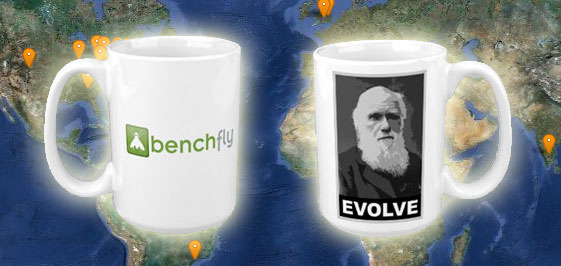Forget Wireless Keyboards and Touch Your Plant Instead
by
 This is one of those stories that I just couldn’t ignore. In a nutshell, it’s about using plants to interface with your computer. I know, weird, right?
This is one of those stories that I just couldn’t ignore. In a nutshell, it’s about using plants to interface with your computer. I know, weird, right?
A collaborative project funded primarily by Disney Research Pittsburg (I had no idea that existed either) has developed a technology that allows you to do stuff with a computer by feeling up a potted plant. An electrode is inserted into the soil and hooked up to your CPU. Then, when you touch the plant, a signal is sent to the computer and does…well…stuff.
The scientists used machine assisted learning to teach the computer program how to understand the plant. So, for example, stroking the stem of an orchid might play a high-pitched sound or produce a red color, whereas tousling a gardenia would generate a low-pitched growl and a green glow. Alternatively, you could teach your plant to do something useful, like change the TV channel or schedule a meeting. The possibilities are endless.
But why use plants in this way? From reading the small amounts of materials that accompany the Botanicus Interacticus website, it would seem that the inventors don’t appreciate the way we currently interact with the technological world, by using touchscreens, for example, and would rather we get back in touch with nature. Indeed the emphasis of the project appears to be on the creative, with the exhibit demonstrated in this video centered on musical and colored outputs.
Perhaps the most exciting part about this is the use of different plants to generate different outputs. However, I was mildly disturbed to read “Engaging with more painful plants, such as cactuses, would provide far more rewarding experiences” (ref). I would have thought a more pleasant application would be to use scented herbs, so that in touching the plants you also generated a nice smell. Silly me.
So perhaps in the future those plants on your desk will be more than just decoration, and the fichus in the corner of your bedroom will act as your burglar alarm. Whatever the outcome, I for one will not be attaching a cactus to my alarm clock.
Katie Pratt is a postdoc in Molecular Biology at Brown University. She has a passion for science communication, and in an attempt to bring hardcore biology and medicine to everyone, she blogs jargon-free at www.katiephd.com. Follow her escapades in the lab and online on Twitter.
.
Be the first to mind the gap by filling in the primary funding organization as a comment and get your name in the blog along with a sweet new BenchFly mug!
 UPDATE: Congratulations to Allie W – winner of this week’s Mind the Gap!
UPDATE: Congratulations to Allie W – winner of this week’s Mind the Gap!
About the winner: Allie is a freelance science writer and founder of This Is What A Scientist Looks Like. Follow her on Twitter for the latest.
About the prize: In addition to fame and glory beyond their wildest dreams, winners receive our new hot-off-the-presses large (15 oz) BenchFly mug to help quench their unending thirst for scientific knowledge… or coffee. Check out where the mug has traveled – will you be the first in your state or country to win one?
Miss a previous edition of Mind the Gap? Shame on you! Don’t worry – we’ve got you covered:
- Coitus Interruptus
- Sun, Sand, and Damaged RNA
- Let’s Talk About (Fruit Fly) Sex
- This is Not an Article About Running Viruses
- How is a Dormouse Like a Career Scientist?
- With Great Power Comes Great Violin Strings
- Tweet Tweet? TWEEEET!!
- All the Better to See Sperm Whales With, My Dear
- Saw VII: The Revenge of the Sawfish
- Caution: Objects May Appear Larger Than They Really Are
- Facebook Updates: The Good, The Bad, and The Vague
- Scared of Dropping the Soap? Worry No More.
.



Allie W.
wrote on August 8, 2012 at 2:59 pm
Disney Research Pittsburg
alan@benchfly
wrote on August 8, 2012 at 3:04 pm
Jackpot – we have a winner!
holleyzt
wrote on August 8, 2012 at 3:04 pm
Disney Research Pittsburg